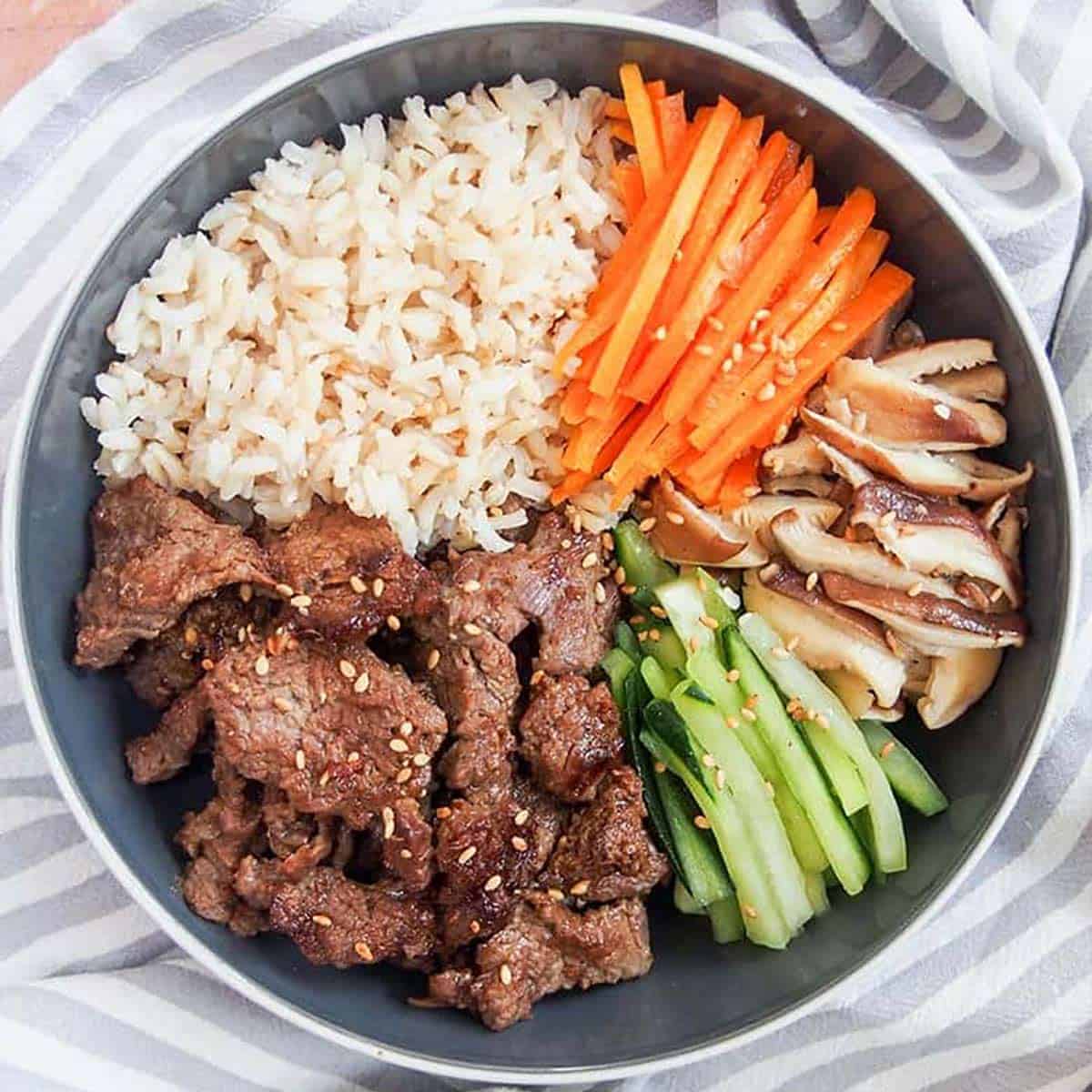
Beef Bulgogi Bowls: A Culinary Journey into Korean Delights
In the realm of Korean cuisine, beef bulgogi stands as a culinary masterpiece, tantalizing taste buds with its savory, sweet, and slightly spicy flavors. Originating from the Korean word "bul" (fire) and "gogi" (meat), bulgogi translates to "fire meat," aptly describing the traditional method of cooking thinly sliced beef over an open flame.
Today, beef bulgogi has evolved into a versatile dish, enjoyed in various forms, including the delectable beef bulgogi bowl. This dish combines the succulent flavors of bulgogi with a medley of fresh vegetables, aromatic rice, and a vibrant sauce, creating a symphony of textures and flavors that will leave you craving for more.
Ingredients for Beef Bulgogi Bowls:
For the Bulgogi:
- 1 pound flank steak, thinly sliced against the grain
- 1/2 cup soy sauce
- 1/4 cup brown sugar
- 1/4 cup sesame oil
- 2 tablespoons minced garlic
- 2 tablespoons minced ginger
- 1 tablespoon gochujang (Korean chili paste)
- 1 teaspoon black pepper
- 1/2 teaspoon sesame seeds
For the Rice:
- 2 cups short-grain white rice
- 2 1/4 cups water
For the Vegetables:
- 1 cup shredded carrots
- 1 cup shredded cucumber
- 1/2 cup thinly sliced red onion
- 1/2 cup bean sprouts
For the Sauce:
- 1/4 cup soy sauce
- 1/4 cup rice vinegar
- 1 tablespoon sesame oil
- 1 teaspoon honey
- 1/2 teaspoon minced garlic
- 1/2 teaspoon sesame seeds
Instructions:
For the Bulgogi:
- In a large bowl, combine the flank steak, soy sauce, brown sugar, sesame oil, garlic, ginger, gochujang, black pepper, and sesame seeds.
- Mix well to ensure the steak is evenly coated.
- Cover the bowl and refrigerate for at least 30 minutes, or up to overnight.
For the Rice:
- Rinse the rice thoroughly under cold water until the water runs clear.
- In a medium saucepan, combine the rice and water.
- Bring to a boil over high heat.
- Reduce heat to low, cover, and simmer for 18-20 minutes, or until all the water has been absorbed.
For the Vegetables:
- Shred the carrots and cucumber using a grater or mandoline.
- Thinly slice the red onion.
- Rinse the bean sprouts.
For the Sauce:
- In a small bowl, whisk together the soy sauce, rice vinegar, sesame oil, honey, garlic, and sesame seeds.
To Assemble the Bowls:
- Divide the cooked rice among four bowls.
- Top with the marinated bulgogi.
- Arrange the shredded carrots, cucumber, red onion, and bean sprouts around the bulgogi.
- Drizzle the sauce over the bowls.
- Garnish with additional sesame seeds, if desired.
Tips:
- For a richer flavor, use a high-quality soy sauce.
- If you don’t have gochujang, you can substitute with Sriracha or another Korean chili paste.
- Adjust the amount of gochujang to your desired level of spiciness.
- If you don’t have time to marinate the steak overnight, let it marinate for at least 30 minutes before cooking.
- For a more authentic experience, serve the bulgogi bowls with a side of kimchi, a fermented Korean cabbage dish.
Variations:
- Add other vegetables to your bowls, such as shredded zucchini, bell peppers, or mushrooms.
- Top the bowls with a fried egg for an extra protein boost.
- For a vegetarian version, substitute the beef with tofu or tempeh.
- Serve the bowls with a side of steamed rice or noodles.
Conclusion:
Beef bulgogi bowls are a culinary delight that seamlessly blend the savory flavors of Korean barbecue with the freshness of vegetables and the comforting warmth of rice. Whether you’re a seasoned Korean food enthusiast or a curious explorer, these bowls offer an unforgettable taste experience that will tantalize your taste buds and leave you yearning for more. So gather your ingredients, fire up your stove, and embark on a culinary journey into the vibrant world of Korean cuisine with these delectable beef bulgogi bowls.















